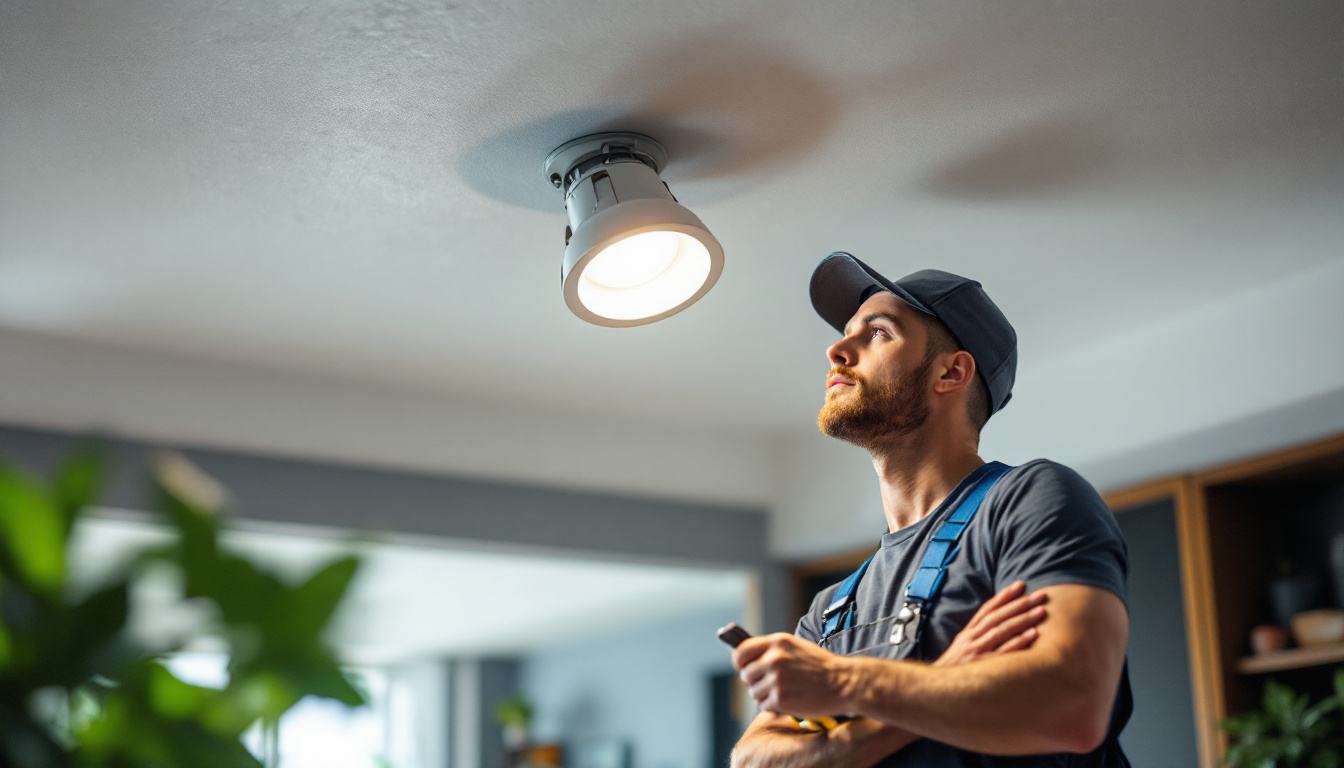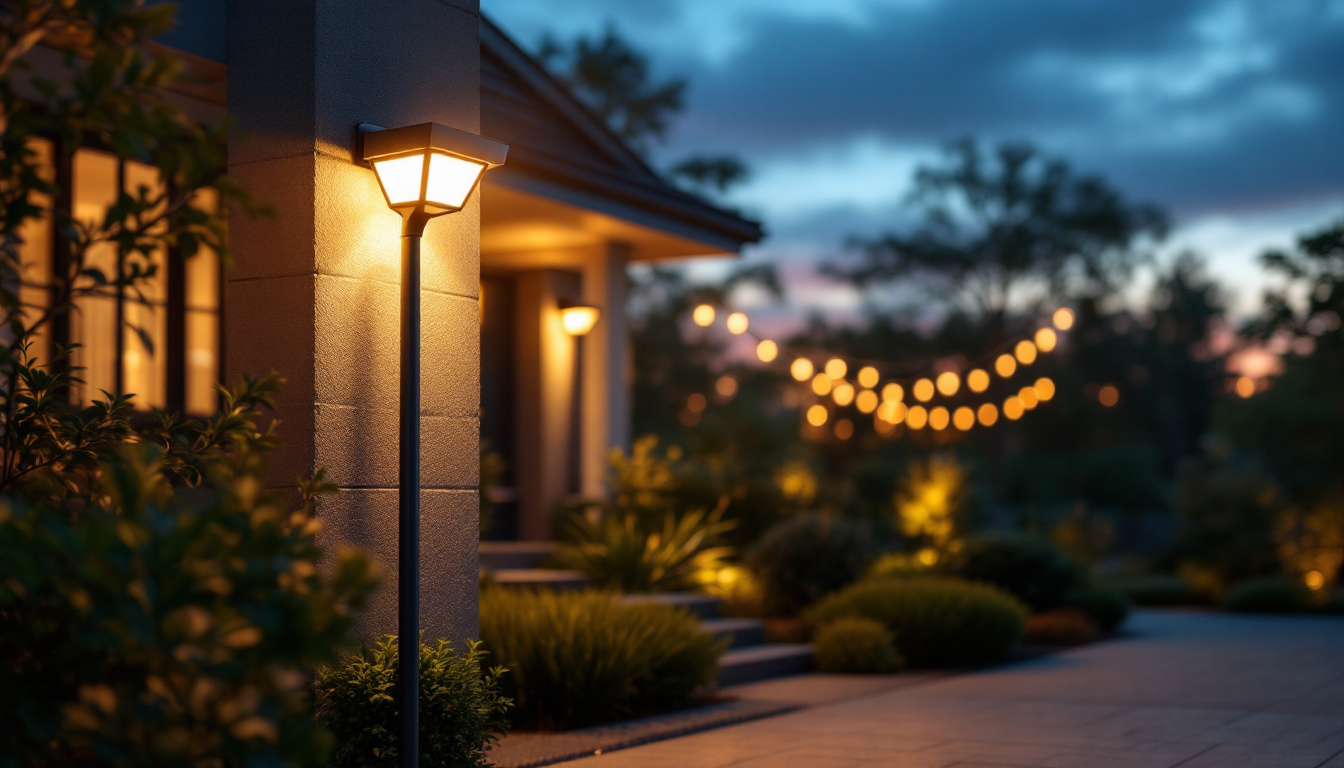
As the demand for energy-efficient lighting solutions continues to grow, recessed can lights have become a popular choice for both residential and commercial spaces. For lighting contractors, understanding the intricacies of retrofitting these fixtures is essential. This article delves into the essentials of recessed can light retrofits, offering valuable insights for lighting professionals.
Recessed can lights, also known as pot lights or downlights, are fixtures that are installed into a hollow opening in the ceiling. They provide a sleek, unobtrusive lighting solution that can enhance the aesthetic appeal of any space. These fixtures are versatile and can be used for various applications, including task lighting, accent lighting, and ambient lighting. Their ability to blend seamlessly into the ceiling makes them an ideal choice for modern interiors, where minimalism is often key to achieving a clean and sophisticated look.
One of the primary benefits of recessed can lights is their ability to create a clean, modern look while distributing light evenly throughout a room. However, as technology evolves, older recessed fixtures may need to be retrofitted to accommodate new lighting technologies, such as LED bulbs. This process not only improves energy efficiency but also enhances the overall performance of the lighting system. Additionally, the shift to LED technology can lead to improved thermal management within the fixture, reducing heat buildup and extending the lifespan of both the fixture and the bulbs.
Before diving into the retrofit process, it’s crucial to understand the main components of recessed can lights. These typically include the housing, trim, and bulb. The housing is the metal can that holds the bulb and is installed in the ceiling. The trim is the visible part of the fixture that provides a finished look, while the bulb is the light source itself. Understanding these components can help homeowners and contractors make informed decisions about design and functionality.
Each of these components plays a significant role in the fixture’s overall performance and aesthetic appeal. When retrofitting, contractors must consider compatibility between the existing housing and the new components to ensure optimal functionality. For instance, the choice of trim can dramatically affect the light’s distribution and intensity, while the housing must be rated for the type of bulb being used, particularly in terms of heat dissipation and energy efficiency. Furthermore, the variety of trims available—from baffle to reflector styles—allows for customization that can enhance the design of any room.
Retrofitting recessed can lights offers numerous advantages. First and foremost, it allows for the integration of energy-efficient LED technology, which can significantly reduce energy consumption and lower utility bills. Additionally, LED bulbs have a longer lifespan compared to traditional incandescent or halogen bulbs, which means fewer replacements and less waste. This not only benefits the environment but also saves homeowners time and money in the long run.
Moreover, retrofitting can improve the quality of light in a space. Many modern LED options offer better color rendering and adjustable brightness, allowing for a customized lighting experience. This is particularly beneficial in environments where lighting quality is critical, such as art galleries or retail spaces. In these settings, the ability to highlight specific features or products can enhance the overall experience for visitors and customers. Furthermore, with the advent of smart lighting technology, retrofitting can also enable homeowners to control their lighting remotely, adding convenience and flexibility to their living spaces. By incorporating features like dimming capabilities and color temperature adjustments, retrofitted recessed can lights can adapt to various moods and activities throughout the day.
Retrofitting recessed can lights involves several steps, each requiring careful planning and execution. Lighting contractors must be familiar with the existing setup and the new components being installed to ensure a smooth transition.
The first step in the retrofit process is assessing the existing recessed can lights. Contractors should examine the housing type, size, and compatibility with new LED options. It’s essential to check for any damage or wear that may affect the installation of new components.
During this assessment, contractors should also consider the overall layout of the lighting system. This includes the spacing of fixtures, the types of bulbs currently in use, and the specific lighting needs of the space. A thorough evaluation will help inform the best retrofit approach.
Once the existing fixtures have been assessed, the next step is selecting compatible LED options for the retrofit. There are various types of LED retrofits available, including LED bulbs, retrofit kits, and integrated LED fixtures. Each option has its pros and cons, and the choice will depend on the specific needs of the project.
For instance, LED bulbs can be a straightforward replacement for traditional bulbs, while retrofit kits may offer a more comprehensive solution that includes new trim and housing components. Integrated LED fixtures, on the other hand, provide a complete lighting solution but may require more extensive modifications to the existing setup.
With the new components selected, contractors can begin the installation process. The first step typically involves turning off the power to the existing fixtures to ensure safety during the retrofit. Next, the old bulbs and trim are removed, followed by the housing if necessary.
Once the old components are removed, the new LED options can be installed. This may involve attaching the retrofit kit or inserting the new LED bulbs into the existing housing. After installation, it’s crucial to test the fixtures to ensure proper functionality and make any necessary adjustments.
While retrofitting recessed can lights can be a straightforward process, several challenges may arise. Being aware of these potential issues can help contractors prepare and mitigate problems effectively.
One of the most common challenges in retrofitting is compatibility between existing fixtures and new components. Not all recessed can lights are designed to accommodate LED technology, and some older housings may not be suitable for retrofitting. Contractors must be diligent in selecting components that are compatible with the existing setup to avoid costly mistakes.
Additionally, the size and shape of the existing housing can impact the retrofit process. If the new components do not fit properly, it may require additional modifications or even a complete replacement of the housing.
Electrical considerations are another critical aspect of the retrofit process. Contractors must ensure that the existing wiring and circuitry can support the new LED fixtures. In some cases, it may be necessary to upgrade the electrical system to accommodate the new lighting technology.
Furthermore, contractors should be aware of any local building codes or regulations that may affect the installation. Compliance with these standards is essential for ensuring safety and avoiding potential legal issues.
To ensure a successful recessed can light retrofit, lighting contractors should follow several best practices. These guidelines can help streamline the process and enhance the overall quality of the installation.
The lighting industry is constantly evolving, with new technologies and products emerging regularly. Lighting contractors should stay informed about the latest trends in recessed can lights and retrofitting techniques. This knowledge can help contractors make informed decisions and provide clients with the best possible solutions.
Attending industry conferences, participating in training sessions, and subscribing to relevant publications are excellent ways to stay updated on industry advancements. Networking with other professionals can also provide valuable insights and opportunities for collaboration.
Before embarking on a retrofit project, contractors should offer comprehensive consultations to their clients. This involves discussing the client’s specific needs, budget, and aesthetic preferences. By understanding the client’s vision, contractors can tailor their recommendations and ensure a successful outcome.
During the consultation, it’s also essential to educate clients about the benefits of retrofitting and the various options available. This transparency can help build trust and foster a positive working relationship.
Quality and safety should always be a top priority during the retrofit process. Contractors should use high-quality components and adhere to best practices for installation. This not only ensures the longevity of the lighting system but also enhances the safety of the installation.
Regularly reviewing safety protocols and conducting thorough inspections can help identify potential hazards and mitigate risks. Additionally, providing proper training for all team members can contribute to a safer working environment.
Retrofitting recessed can lights is a valuable service that lighting contractors can offer to their clients. By understanding the intricacies of the retrofit process, including assessment, selection, installation, and overcoming challenges, contractors can provide effective lighting solutions that meet the evolving needs of their clients.
Staying informed about industry trends, providing comprehensive consultations, and focusing on quality and safety are essential practices that can enhance the success of any retrofit project. As the demand for energy-efficient lighting continues to rise, lighting contractors who embrace retrofitting will be well-positioned to thrive in a competitive market.
In conclusion, recessed can light retrofits not only improve energy efficiency but also enhance the overall quality of lighting in various spaces. By mastering the essentials outlined in this article, lighting contractors can ensure that they deliver exceptional results that satisfy their clients and contribute to a more sustainable future.
Ready to take your recessed can light retrofit projects to the next level? LumenWholesale is here to support you with an extensive selection of spec-grade lighting products at unbeatable wholesale prices. Say goodbye to local distributor markups and hello to high-performance lighting that meets the highest industry standards. With free shipping on bulk orders, you can stock up on quality lighting solutions without worrying about hidden fees. Elevate your lighting projects with the perfect blend of quality, affordability, and convenience. Wholesale Lighting at the Best Value is just a click away. Partner with LumenWholesale today and light up your clients’ spaces with confidence and efficiency.

Discover how motion sensor spotlights can revolutionize your lighting installation projects by enhancing efficiency, security, and energy savings.

Discover essential best practices for using electrical wire pullers tailored specifically for lighting contractors.

Discover how partnering with Greencreative can revolutionize your lighting projects.

Discover why lighting contractors should prioritize commercial hanging LED lights in their projects.